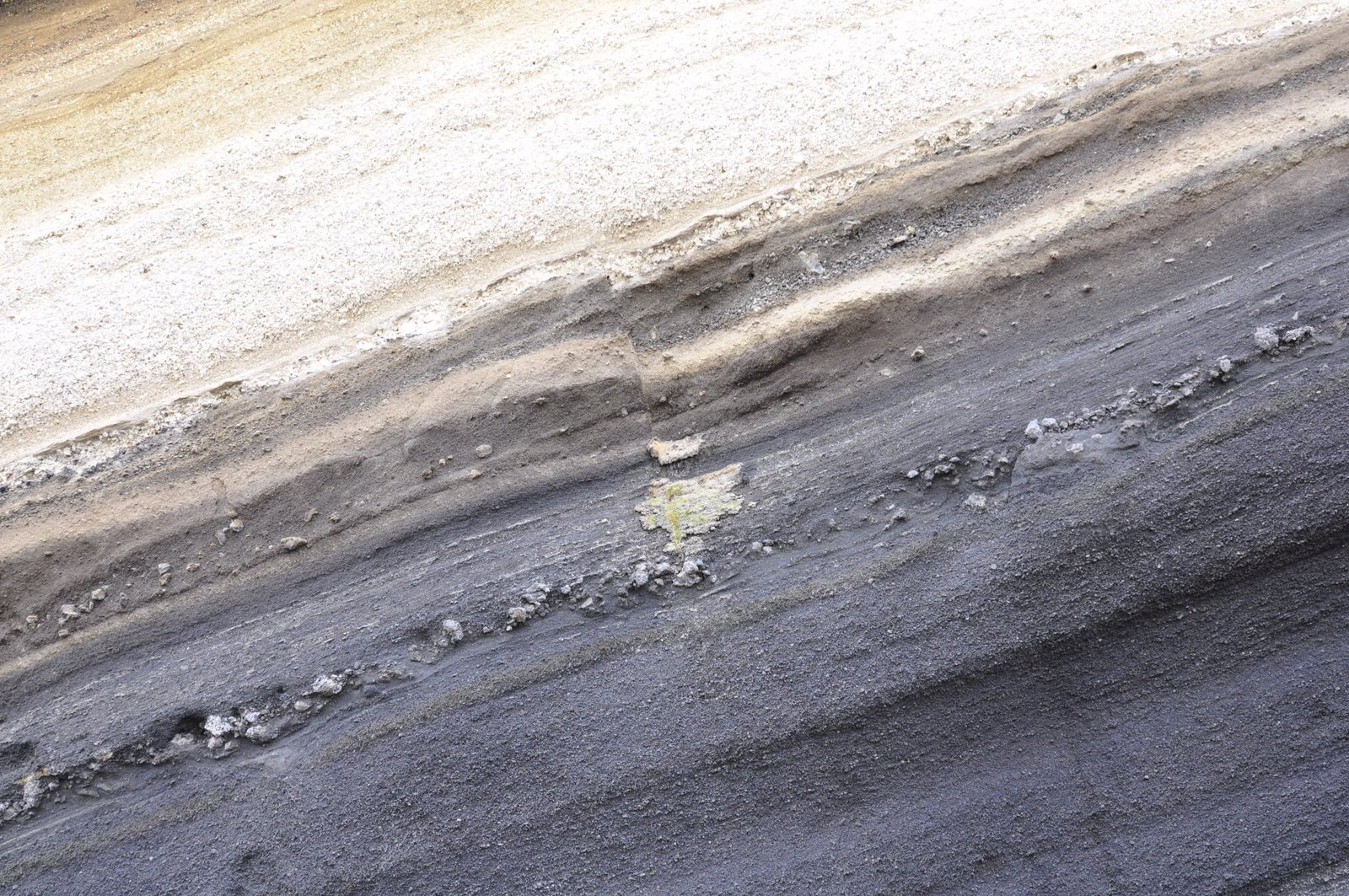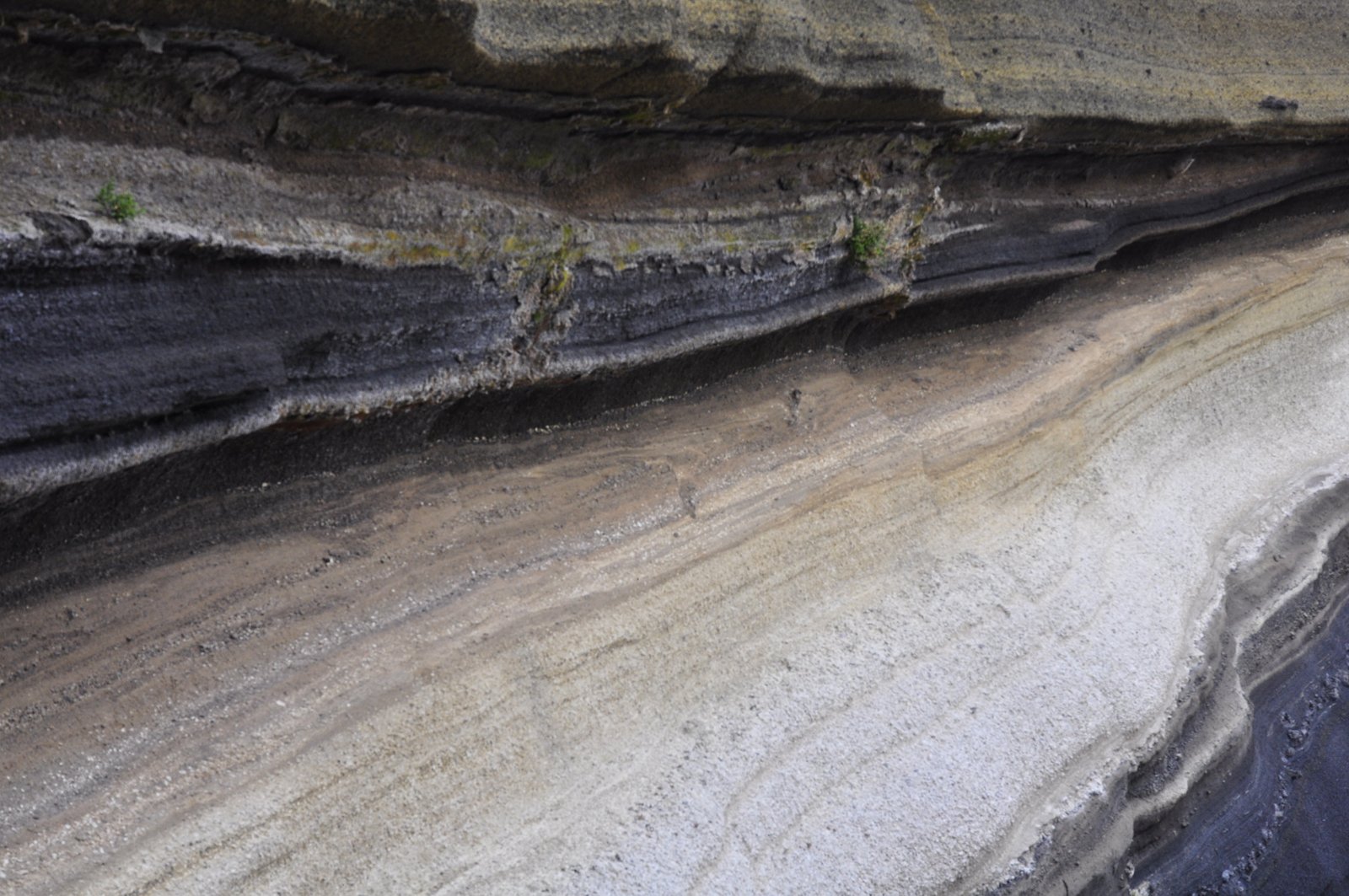Our favorite volcano of the month paints not only grand landscapes, but also petite, nonfigurative studies. These beautiful bands of dark and light ash are found in a road cut along the road northwards from Teide, where it starts winding down.
An art aficionado might call the road cuts “an abstract, semi-linear interaction of the hard nature and soft art, where the converging lines conceptualize the contrast between black and white, good and evil, light and darkness”.
Muggles might say “hey, cool, need to make some pictures!”.
Normal people, a.k.a. geologists, would say that the nice colors come from somewhat varying chemical composition of the ash. Generally: The more iron and dark minerals like pyroxenes and amphiboles, the darker color. Even more important; the more water has been able to wash through the ash – and the more sun shines on it – the more chemical weathering takes place, washes out the iron and leaves behind light clays. Ash grains have various sizes, from tiny to tiny-tiny-tiny, and the latter ones can form layers that are tight, and act as lids, which prevent the water from going further down – which may be one reason some layers are light and others dark.
Enjoy the Road Cut Ash Art Gallery!




